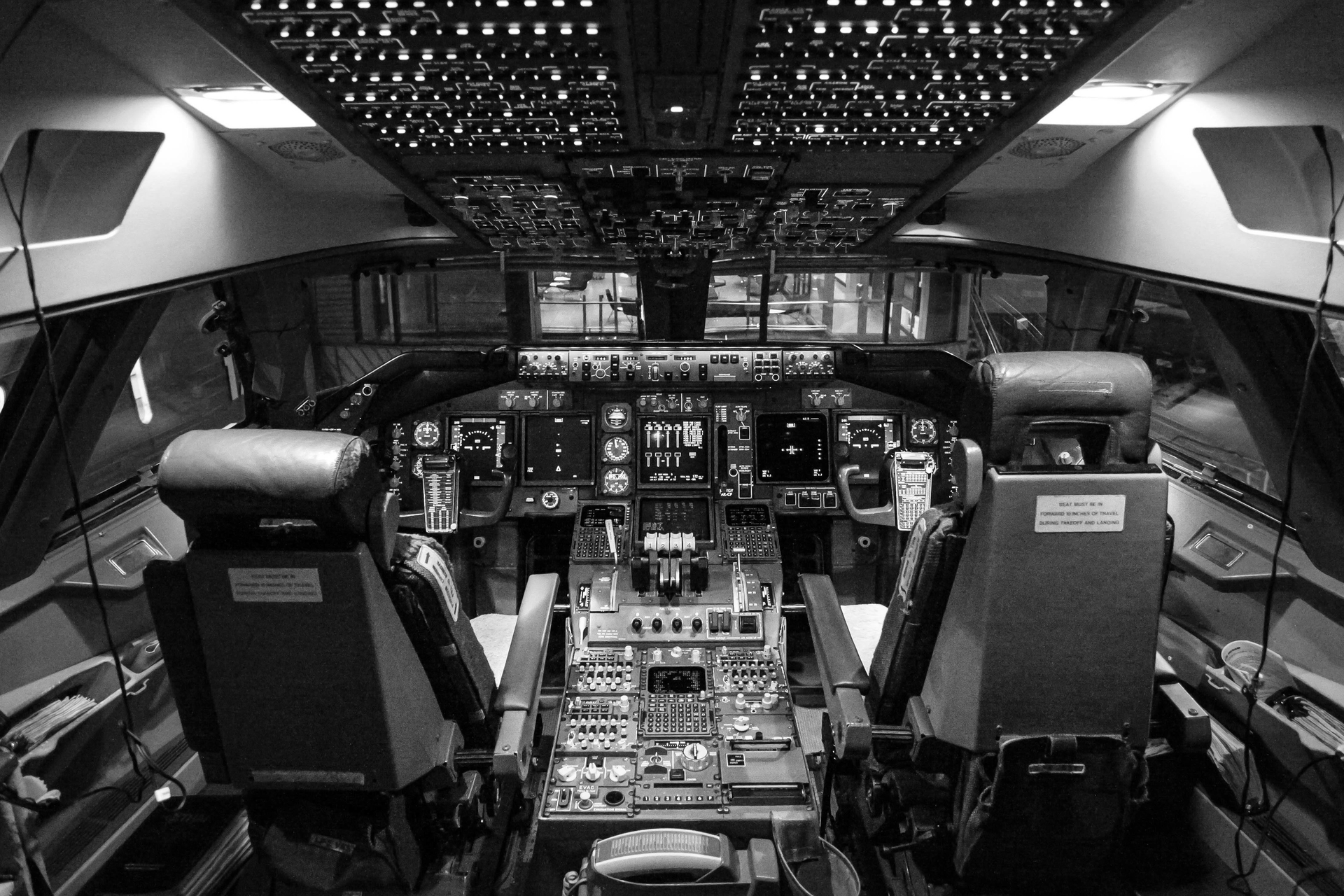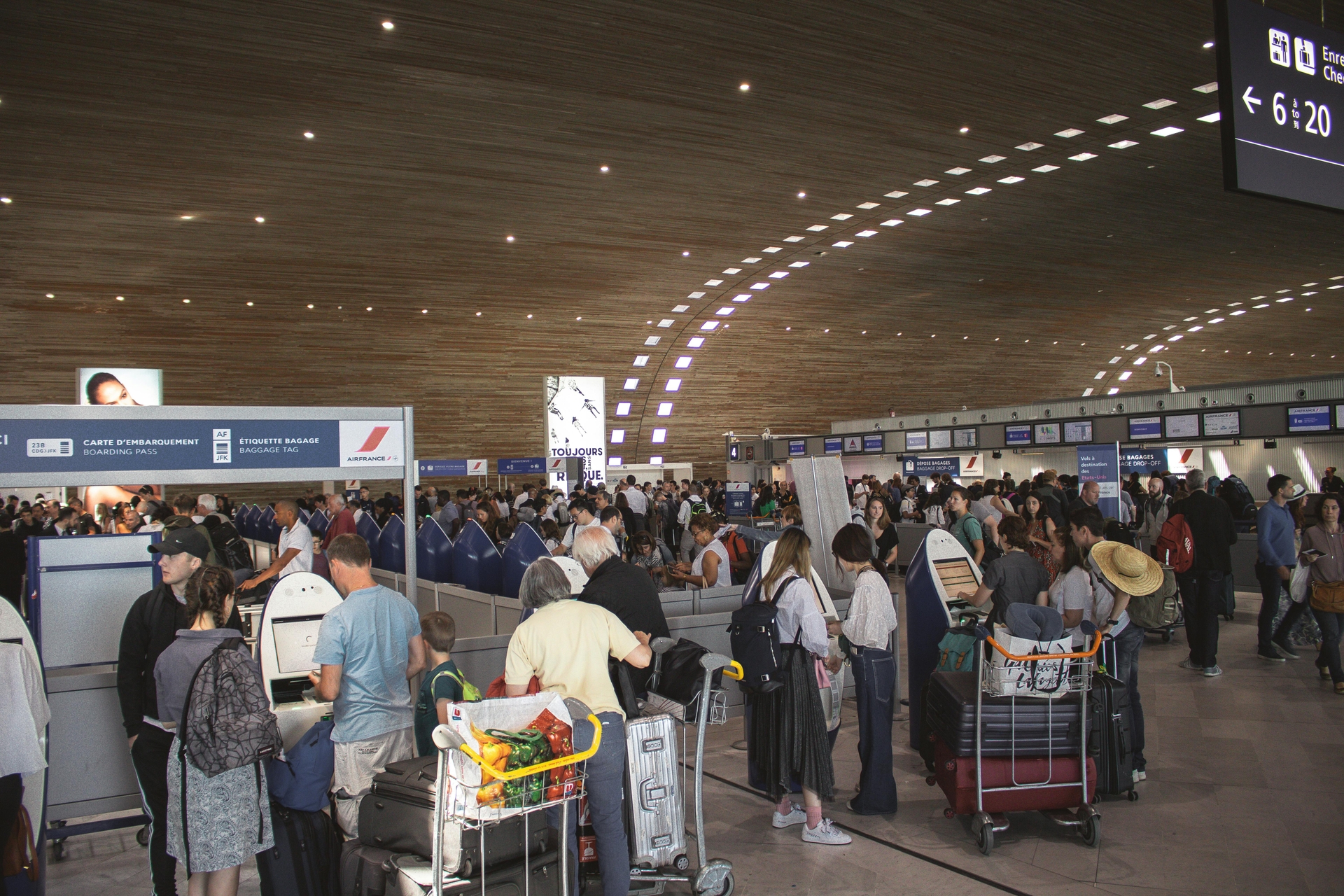
AeroGenie — Your Intelligent Copilot.
Understanding the Complete Aircraft Parts Distribution Process Including Best Practices and Challenges
September 16, 2025
Aircraft parts distribution keeps fleets safe and profitable—but it’s facing new pressures from aging aircraft, supply chain turbulence, and counterfeit risks. Explore best practices, challenges, and future innovations shaping how every bolt, blade, and circuit gets delivered—on time, authentic, and safe.
Aircraft parts distribution is one of the most critical components of aviation, yet it’s often the least visible.
Every safe flight depends on the timely delivery of thousands of specialized parts, from complex avionics to simple bolts and fasteners. The process helps ensure airworthiness and passenger safety.
The process itself—shipping boxes of goods—sounds simple enough. But with a vast, global supply chain, shipping logistics are anything but. The large, fractured distributor network includes thousands of tier-one and sub-tier suppliers. And now there are new layers of complexity: AI technologies, green regulations, geopolitics, aging fleets, and market shifts.
This turbulence is reshaping how parts are sourced, certified, and delivered.
This article explores the aircraft parts distribution process from start to finish and identifies best practices for efficiency and safety. It also examines major challenges confronting the industry, and looks ahead to how innovation and regulations may reshape distribution in the years to come.
The scale and scope of the aircraft parts distribution industry
The aircraft parts distribution sector is massive, but its size can be difficult to pin down because it spans both commercial and general aviation.
The U.S. Census Bureau’s data for NAICS code 423860, which covers aircraft parts distributors, provides a useful proxy. In 2017, the most recent year available, this sector included more than two thousand businesses, generating about $49 billion in annual sales and employing over thirty-seven thousand people with a payroll of $2.5 billion (Aviation Suppliers Association).
Globally, the role of parts distribution is expanding as air travel demand continues to rise. Passenger demand, measured in revenue passenger kilometers, grew by 10% from 2023 to 2024 and is projected to grow at an annual rate of 4% through 2030 (McKinsey). This growth has pushed airlines, lessors, and maintenance providers to rely more heavily on parts distributors to keep their older fleets operational.
Stakeholders in this sector are diverse. They include original equipment manufacturers (OEMs) producing new parts, specialized distributors handling procurement and warehousing, maintenance repair and overhaul (MRO) providers sourcing replacement parts, and airlines that must balance fleet renewal with the continued use of older aircraft.
Regulatory bodies like the FAA and EASA set the compliance framework, while organizations such as the Aviation Suppliers Association provide accreditation programs for uniform standards of safety and quality.
Together, these players form an essential network that keeps aircraft parts moving.
The aircraft parts distribution process: From manufacturing to delivery
The distribution of aircraft parts is not a single transaction but a carefully choreographed process designed to meet strict safety and regulatory standards. Every step matters because even the smallest component can have significant consequences for flight safety.
Sourcing and procurement
Parts may come directly from OEMs, licensed aftermarket manufacturers, or surplus inventories.
Illustrated Parts Catalogs (IPCs) and National Stock Numbers (NSNs) provide detailed references that help procurement teams identify the exact parts required for specific models.
Distributors act as the bridge, ensuring that the right part is matched to the right request without errors that could compromise safety.
Warehousing and inventory management
Once acquired, parts must be stored under conditions that preserve their integrity. Serialized components are carefully logged to track their life cycles.
Modern warehouses use digital systems to monitor shelf life, environmental controls, and stock rotation, although some providers still rely on pen and paper or spreadsheets.
Without a proper inventory management system of some kind, airlines risk costly delays if a needed part cannot be quickly located or verified.
Order fulfillment and logistics
Aircraft often require replacement parts on short notice, sometimes within hours, to avoid grounding.
Distributors must be able to ship parts across borders quickly while complying with customs and regulatory requirements. Time-sensitive logistics, known as Aircraft on Ground (AoG) services, are among the most critical functions of the distribution chain.
Integration with MRO and airlines
Ultimately, the goal of the process is to feed directly into maintenance schedules. Parts distribution supports both routine maintenance and unscheduled repairs, enabling MROs and airlines to keep fleets safe and airworthy. The process must be efficient, transparent, and documented to withstand regulatory audits.
Best practices in aircraft parts distribution
As the complexity of aviation grows, adopting best practices ensures smooth distribution. Industry leaders and regulators alike stress that success requires embedding compliance, technology, and collaboration at every step.
Vendor accreditation and compliance
Accreditation programs such as FAA AC00-56 and ASA-100 ensure that distributors maintain rigorous standards. Using only accredited vendors minimizes the risk of counterfeit or substandard parts entering the system (Aviation Suppliers Association). In Europe, EASA’s Quality Management System provides a similar layer of oversight (EASA).
Data-driven procurement
The most successful distributors increasingly use analytics to forecast demand. Companies like ASAP Semiconductor, which analyze purchase patterns, documentation requirements, and regulatory trends, can pre-stock high-demand items which shortens lead times (CBS42). This proactive approach can reduce AOG events and enhance customer trust.
Digital documentation and traceability
Paper-based Authorized Release Certificates (ARCs), a long-time industry staple, are increasingly vulnerable to fraud. Industry coalitions now recommend digital ARCs secured with encryption and digital signatures, which improve traceability and reduce opportunities for counterfeit documentation (Aviation Week).
Blockchain and digital twin technologies are also being piloted to create secure, real-time tracking across the entire lifecycle of a part.
Collaboration across the supply chain
No single player can overcome all supply challenges alone. McKinsey emphasizes the importance of aligning OEMs, suppliers, and airlines in coordinated production and delivery efforts to avoid over- or undersupply (McKinsey). This collaboration reduces bottlenecks and builds resilience.
Workforce and training
Distribution is a knowledge-intensive business. Procurement staff must understand technical specifications, changing regulatory requirements, and complex catalog systems. Companies that invest in training and accreditation for their teams reduce compliance risks and improve operational reliability.
Together, these best practices create a more efficient system that’s resilient against fraud, obsolescence, and other disruptions.
Challenges facing the distribution ecosystem
Even when employing best practices, the aircraft parts distribution sector faces persistent challenges that test its resilience. These challenges span supply chain disruptions, regulatory compliance, and emerging risks from counterfeit parts.
Supply chain disruptions
Events in recent years have proven just how fragile aviation supply chains are. From raw material shortages to geopolitical instability to a barrage of tariffs and trade wars, the hits keep coming. An already wobbly network—plagued by production slowdowns, labor shortages, and overreliance on limited suppliers—is buckling.
The Government Accountability Office (GAO) has kept a close watch on how these disruptions are impacting the aviation industry. The GAO has documented how these challenges are creating bottlenecks for both new and replacement parts (GAO).
Some parts are more at risk than others. Semiconductors, forgings, and castings are some of the biggest headaches for the industry, delaying manufacturing and maintenance schedules.
Aircraft shortages and fleet aging
The rebound in air travel demand has collided with a constrained supply of new aircraft. Between 2019 and 2024, only about 7,000 aircraft were delivered worldwide, compared with the 12,000 expected pre-pandemic. This gap has forced airlines to keep older aircraft in service longer, driving up demand for spare parts and MRO services (McKinsey).
Unapproved and counterfeit parts
Incidents like AOG Technics in London highlight the risks that falsified documentation and counterfeit parts pose. Thousands of components, including turbine blades, were sold with fraudulent certificates, forcing airlines worldwide to conduct costly inspections and ground flights. This episode demonstrates how one bad actor can send shockwaves through an entire global system (Aviation Week).
Inventory obsolescence
Technological advances create tension between maintaining legacy parts for older aircraft and procuring new components for modern fleets. Distributors must balance stocking items that may soon become obsolete with holding older parts for airlines operating older aircraft.
Digital transition
The shift from paper-based to digital systems is uneven across the industry. While digital ARCs, blockchain, and AI-driven forecasting offer tremendous efficiency, adoption is inconsistent.
Buy-in or resources to make the shift are not an inherent given, and companies that lag in digitalization are falling behind competitors for compliance and traceability standards.
Case studies and real-world applications
Examples from across the industry illustrate how different stakeholders are adapting to shifting conditions in aircraft parts distribution.
ASAP parts distribution services
ASAP Semiconductor has expanded its aftermarket inventory and optimized digital procurement tools to respond to rising demand.
Its platform now allows users to source parts by FSC, CAGE Code, NSN, or NIIN, streamlining processes for airlines and MROs (CBS42). This initiative demonstrates how proactive stocking and digital cataloging can reduce AOG downtime.
Aviation sourcing solutions
Through its Aviation Sourcing Solutions platform, ASAP Semiconductor has also expanded Illustrated Parts Catalog (IPC)-driven procurement. This makes it easier for airlines and service numbers across multiple sources (Military Aerospace).
TES and Honeywell agreement
In 2024, TES signed an exclusive agreement to distribute Honeywell avionics, including the CD830 FMS Control Display Unit and 5G bandpass filters for radar altimeters (AviTrader). The partnership highlights how OEMs increasingly rely on specialized distributors to expand reach and improve product availability in the business aviation market.
Coalition against unapproved parts
After the AOG Technics scandal, GE Aerospace and other major stakeholders formed the Aviation Supply Chain Integrity Coalition. Their recommendations, which ranged from vendor accreditation to digital documentation, offer a blueprint for protecting against counterfeit risks and enhancing supply chain resilience (Aviation Week).
These case studies illustrate how innovation, collaboration, and proactive adaptation are shaping the future of aircraft parts distribution.
Innovation and the future of aircraft parts distribution
The next decade will bring profound changes to how aircraft parts are sourced, distributed, and tracked. Emerging technologies and new sustainability demands are already reshaping common practices.
Hydrogen and sustainability
The UK’s Civil Aviation Authority has launched the Hydrogen Challenge program to accelerate the use of hydrogen propulsion.
Projects such as ZeroAvia’s regional airliner conversions and Rolls-Royce’s hydrogen turbine development will require entirely new supply chains for storage, refueling, and safety systems (AIN Online).
As sustainable fuels and propulsion gain more ground, distributors will need to adapt inventories and logistics to accommodate a new generation of aircraft technology.
Advanced analytics and AI
Artificial intelligence and predictive analytics are transforming procurement and inventory management. McKinsey highlights that early-warning systems powered by AI can detect supply chain disruptions before they materialize, reducing shortages by more than 25% (McKinsey).
Distributors applying machine learning to purchasing data can anticipate demand spikes and minimize costly AOG events.
Contract flexibility and scenario planning
Rigid long-term contracts for aircraft delivery and parts supply have historically created an imbalance when demand shifts suddenly.
McKinsey suggests more flexible agreements that allow delivery slot trading and scenario planning for different fleet needs (McKinsey). Distributors with adaptive contracting are better prepared for cycles of shortage and oversupply.
Geopolitical and regulatory outlook
Trade tensions, labor shifts, and new safety standards will continue to influence distribution. From digital ARCs mandated by regulators to blockchain-based traceability systems, compliance will be an increasingly digital affair. Digitized, distributors are well placed to meet the complex web of international requirements with greater accuracy and efficiency..
Innovation will not eliminate challenges, but it can create a more resilient and transparent system.
FAQs
What’s the difference between FN and NE parts?
FN and NE are two acronyms (among many more) used to describe the condition of aircraft parts.
- FN (Factory New): A Factory New part is brand-new, comes directly from the Original Equipment Manufacturer (OEM), has no operating hours or cycles, and is typically less than two years old. It usually includes OEM-issued documentation such as a Certificate of Conformance or FAA Form 8130‑3.
- NE (New): A new part is also unused with no prior service history, but may not be shipped directly from the OEM. It can come via distributors or other third-party suppliers. It still retains OEM certification and full traceability. Technically, both conditions represent unused parts; “Factory New” emphasizes origin and packaging, while “New” emphasizes condition and certification.
What is an SUP part?
A SUP (Suspected Unapproved Part) is an aircraft component whose conformity to required standards is doubtful—due to questionable origin, lack of proper documentation, or non-compliance with maintenance or manufacturing requirements. SUPs must be reported and quarantined until they are verified or deemed unapproved (FAA).
This is part of the FAA’s Suspected Unapproved Parts (SUP) Program, through which the agency investigates reports and ensures unapproved parts are identified and removed from the supply chain.
How can you reduce the environmental impact of distributing parts for AoG events?
AOG events are expensive—economically and environmentally—as they often necessitate an immediate, carbon-heavy journey to dispatch an urgently needed part.
While the need for emergency shipments will always exist, companies can reduce the environmental impact (McKinsey). Some sustainable distribution principles include:
- Optimizing transportation modes and routes: Partner with logistics providers specializing in expedited but eco-efficient shipping, use strategically located warehouses to minimize distance flown, and opt for more efficient modes when feasible.
- Minimizing packaging waste: Use right‑sized, reusable, or recyclable packaging and apply “reduce, reuse, recycle” strategies within all warehousing and dispatch operations.
- Implementing reverse logistics: Reclaim and reuse packaging and parts when possible, such as tracking and collecting returned containers instead of disposing of them after a single use.
Together, these steps can lower carbon emissions and material waste, and improve responsiveness during critical AOG operations.
Are recycled aircraft parts always better for the environment?
Not always, it depends on the material and recycling context:
For metals, using recycled materials is generally better for the environment. Recycling aluminum and titanium can substantially reduce energy consumption and carbon emissions compared to making new from virgin materials. For instance, recycled aluminum can save up to 95% of the energy required for new production, making it significantly more eco-friendly (Quest Metals).
Composite materials, however, are not always the most sustainable option. Many modern aircraft use composite materials (like carbon fiber), which are more challenging to recycle.
Reprocessing composites can yield fewer environmental benefits and may involve more complex or hazardous procedures (Airbus Newsroom, Quest Metals). Moreover, the recycling process itself deals with impurities and hazardous coatings.
Even when properly recertified, reclaimed composite parts may not deliver additional energy savings or environmental gains. The handling process can erode any ecological benefits.
Looking ahead
Aircraft parts distributors may operate behind the scenes, but they are vital to aviation safety and reliability. Best practices such as vendor accreditation, data-driven procurement, and digital documentation are helping to strengthen industry practices.
At the same time, distributors must continuously contend with supply chain disruptions, a surge in counterfeit parts and the complexities (anxiety and expense) of modernization.
Real-world case studies show that proactive innovation and collaboration can yield meaningful improvements for efficiency and long-term operational resilience. Looking forward, sustainability initiatives, AI-driven forecasting, and flexible contracting will reshape the industry even further.
The future of flight depends not just on new aircraft and advanced technologies but also on the unseen network of distributors who ensure that every bolt, blade, and circuit arrives where it is needed—on time, authentic, and safe.
Partner with ePlaneAI to streamline your aircraft parts distribution. See how we bring transparency, speed, and resilience to every step of the supply chain.
Aviation Maintenance Trends That May Gain Momentum in Uncertain Circumstances
Aircraft are staying in service longer, supply chains are a powder keg, and the tech is evolving overnight. Discover the maintenance trends gaining momentum and what they mean for operators trying to stay airborne and profitable.

October 2, 2025
Choosing the Right Aircraft Parts with Damage Tolerance Analysis
The future of aviation safety is all about the parts. Authentic, traceable parts bring optimal damage tolerance and performance to fleets for maximum safety and procurement efficiency.

September 30, 2025
How to Enter New Aviation Markets: The Complete Guide for Parts Suppliers
Breaking into new aviation markets? Learn how suppliers can analyze demand, manage PMA parts, and build airline trust. A complete guide for global growth.

September 25, 2025
5 Aviation Marketing Strategies You Should Use to Sell to Global Airlines
Airlines face shrinking margins and rising expectations. See how top strategies—dynamic offers, partnerships, personalization, and more—can close deals with global carriers.
